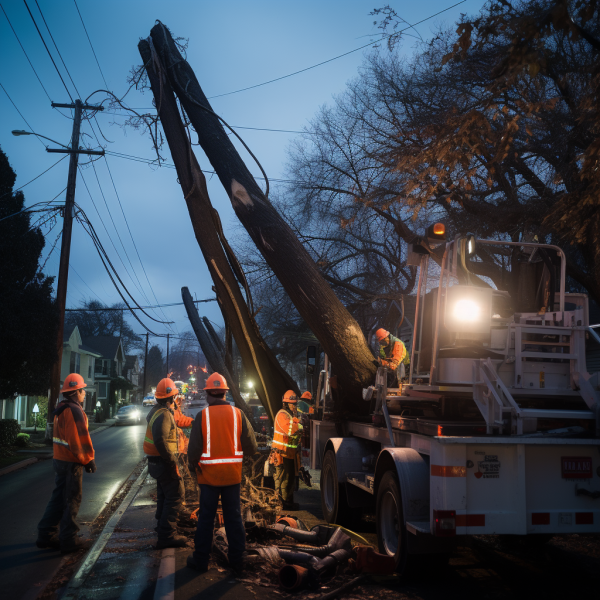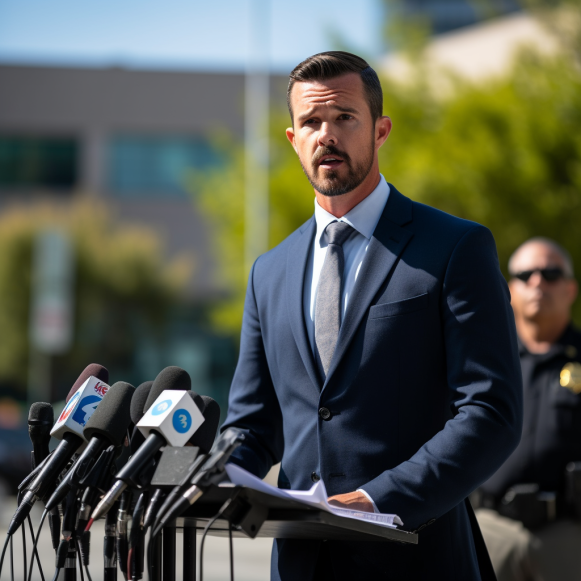PG&E faces questions amid wildfire prevention strategy shift from tree trimming to grid tech

Pacific Gas & Electric Co. has changed its strategy to avoid starting another devastating wildfire as the state enters its peak wildfire season: it is focusing less aggressively on trimming trees that pose hazards near electrical wires and relying more on technology to quickly de-energize damaged lines.
The pivot at Northern California’s beleaguered utility giant has prompted regulators to ask questions, and PG&E has been given until Monday to respond. The transition has been in the works for more than a year, but it really kicked off in January, when PG&E ended its “Enhanced Vegetation Management” program, which involved increased vegetation removal around power lines.
The utility concluded that the program, which began in 2019 in response to a series of destructive wildfires caused by trees or limbs falling on electrical equipment, was not cost effective. According to PG&E, a combination of routine and selective tree work and new power grid technologies will provide more protection at a lower cost. However, there are concerns that it will leave more customers without power for longer periods of time.
“We develop and implement our wildfire mitigation programs based on the best information and data that we have at the time, and our capabilities have continued to evolve and mature since 2019,” said PG&E spokesman Matt Nauman.
“We realized we needed to evolve to engineered controls” — such as Enhanced Powerline Safety Settings, which cut power within a tenth of a second in the event of a line fault — “because we cannot identify every tree that may pose a risk.”
Regulators and watchdogs are skeptical. The California Natural Resources Agency’s new Office of Energy Infrastructure Safety examines utility plans for preventing equipment from sparking wildfires. It told PG&E in June that its new 2023-2025 wildfire mitigation plan is insufficient and ordered the utility to respond by Monday, Aug. 7.
Among the issues raised by Energy Safety is that PG&E’s plan fails to adequately address the risk posed by hazardous trees, fails to provide targets for vegetation inspection programs, and fails to demonstrate how it will address its growing equipment repair backlog. The department also stated that the utility’s plan to bury power lines underground in high-risk areas is inadequate. Furthermore, the power line safety settings may result in unnecessary preemptive power outages known as Public Safety Power Shutoffs, or PSPS, during wind storms.
Officials from Energy Safety declined to comment, citing concerns about jeopardizing their review of PG&E’s plan.
The department, which was established in 2021, also objected to PG&E’s plan last year, but has yet to act on the state’s two other major private utilities, Southern California Edison and San Diego Gas & Electric, which are also required to submit wildfire mitigation plans.
PG&E, which serves more than 5 million households in the state’s northern two-thirds, has been particularly troubled. In federal court, the utility was found guilty of criminal safety violations in connection with a natural gas pipeline explosion in San Bruno in 2010, which killed eight people and destroyed more than 30 homes. Its electrical equipment has since been linked to some of the state’s deadliest and most destructive wildfires, including the Butte Fire in 2015, the Wine Country fires in 2017, and the Camp fire in 2018. In 2019, the utility declared bankruptcy for the second time.
Filsinger Energy Partners, PG&E’s independent safety monitor for the California Public Utilities Commission, noted the company’s shift in wildfire prevention strategy in an April status report. It stated that PG&E arborists were abruptly told to stop tree work last year “due to budgetary constraints well before the end of 2022.”
PG&E told the firm that while its vegetation management budget was reduced from $1.8 billion to $1.4 billion last year, it was due to the utility’s “risk-informed shift to operational mitigations,” and that the overall wildfire budget would remain about $6 billion.
According to the firm, PG&E’s aggressive vegetation program resulted in “an increase in negative customer interactions” and a “higher volume of customer refusals from its increased tree work was impeding its ability to reduce risk associated with removing identified hazard trees.”
PG&E’s Nauman stressed that the utility is not abandoning tree work entirely in its strategy shift. While the stepped-up clearance program is being phased out, PG&E will continue with routine maintenance while focusing tree inspections in high-risk areas and areas with a history of vegetation-caused outages.
PG&E executives said last month at a CPUC safety review hearing that their own analysis found that a combination of newly installed grid technologies, including the Enhanced Powerline Safety Setting shutoff switches, reduced equipment-sparked fires last year by 68% over 2018-2020 levels, compared to just 7% for the vegetation management program. “That’s why we’re confident that what we’ve proposed in terms of layers of protection is the appropriate path forward, both in terms of reducing risk and ensuring we’re doing it in the most cost effective manner for our customers,” PG&E’s chief operating officer Sumeet Singh said.
However, according to the revision notice sent to the utility, “none of these programs, alone or in combination, maintain or replace the detailed approach to hazard tree mitigation conducted under EVM,” or the Enhanced Vegetation Management plan.
Residents in high-risk areas, such as the Santa Cruz Mountains, are divided about the utility’s new direction.
Colleen Miller of Boulder Creek, a town scorched by the 2020 CZU Lightning Fire, said she’s been plagued by power outages caused by hair-trigger safety circuits even when no winds or fires have occurred.
“We’ve had several weeks of power outages,” she explained.
However, Boulder Creek resident Chris Finnie stated that many residents were opposed to the aggressive tree cutting, blaming it for destabilizing slopes and urging PG&E to instead use circuit cut-offs.
“We want those new switches,” Finnie declared. “We don’t want to see slash-and-burn tree cutting.”




